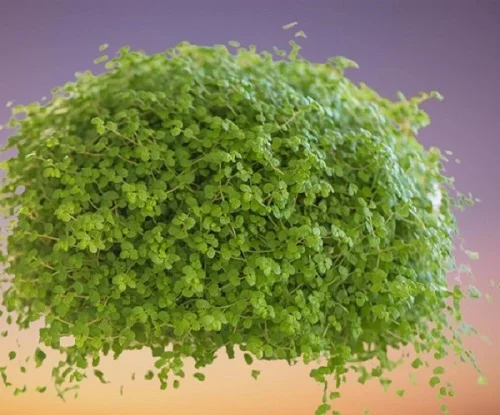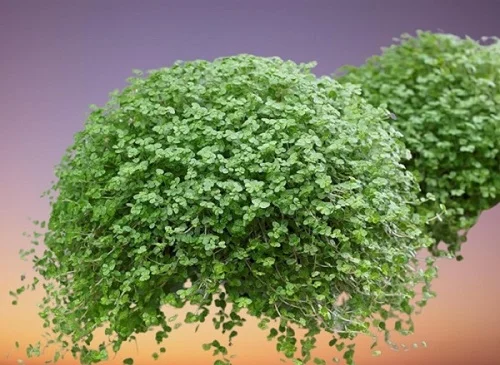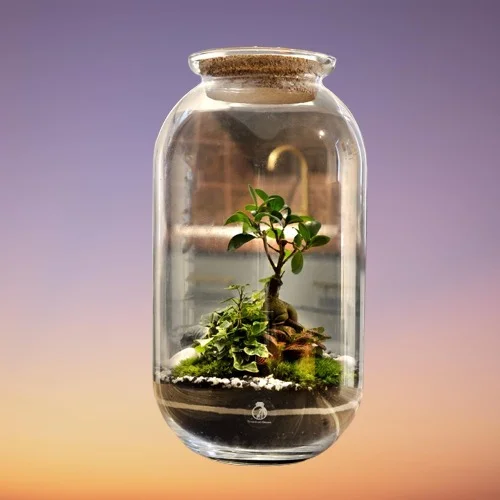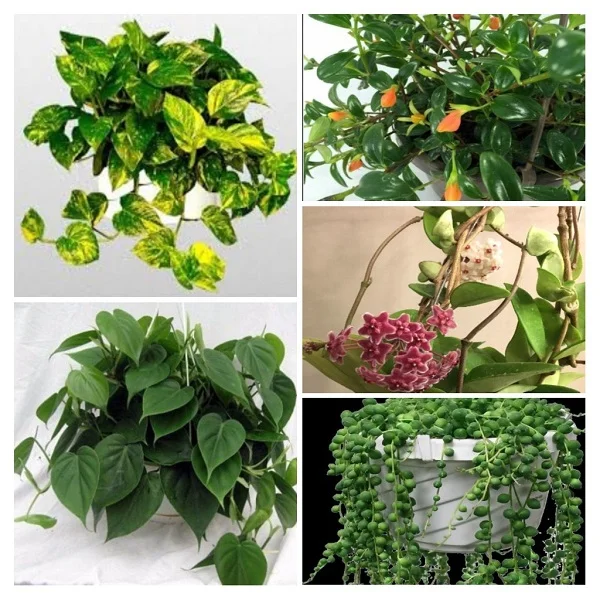Baby's Tears Plant (Soleirolia soleirolii) Indoor Care, Propagation, Problems and Remedies
Some links in this post may be affiliate links
Baby's Tears Plant (Soleirolia soleirolii) flourishes in bright, indirect light, warm and humid conditions and consistently moist, rich, well-drained, all purpose soil coupled with fortnightly feeding in the growing season.
Soleirolia soleirolii is among the fast-growing plants that is ideal for a hanging basket or for covering soil around tall plants but care should be taken as the plant can smoother low-growing plants.
Baby's Tears Plant has a number of common names like Mind Your Own Business, Angel's Tears, Bits and Pieces, Bread and Cheese, Corsican Creeper, Corsican Curse, Paddy's Wig, Irish Moss among others.
Soleirolia soleirolii is fast grow and easy to propagate where a small clump of the plant will grow into a mossy mound in no time when placed on moist soil.
Mind Your Own Business Plant bears green or yellow tiny leaves and multitudes of tiny white flowers. The leaves in are slightly stalked, about 5mm across. The minute flowers produce oval seeds.
On account of its requirement for high humidity and warm conditions, Angel's Tears Plant is among the best plants for a closed terrarium as high humidity can be maintained inside a terrarium.
Soleirolia was named after Joseph Francois Soleirol by Espirit Requien, a French Naturalist. Soleirol, an amateur botanist collected the plant in Corsica an island in the Mediterranean Sea.

Botanical name: Soleirolia soleirolii
Synonym: Helxine soleirolii
Family: Urticaceae
Common names: Baby's Tears Plant, Mind Your Own Business, Angel's Tears, Bits and Pieces, Bread and Cheese, Corsican Creeper, Corsican Curse, Paddy's Wig, Irish Moss
Origin
Soleirolia soleirolii formely called Helxine soleirolii is native to the Northern Mediterranean region in and around Italy and nearby islands.
Varieties
Several varieties of Soleirolia soleirolii are available; argentea has silvery leaves, Aurea has golden-green foliage and Variegata has silvery green variegated leaves among others.
Toxicity
Baby's Tears Plant is non-toxic to both humans and pets as indicated by ASPCA. The plant is safe to be grown indoors.
Where to Buy
If you are looking to acquire Angel's Tears Plants for your collection, check them out on Etsy (Link to Etsy).
Soleirolia soleirolii Care Indoors
Baby's Tears Plant (Soleirolia soleirolii) flourishes in bright indirect light, average warmth of 15-240C, humidity of 70-80% and consistently moist, fertile, well-drained, all purpose soil coupled with fortnightly feeding during the growing season.
Soleirolia soleirolii requires cutting back of the straggly stems to rejuvenate growth. Repotting is only necessary when it becomes pot-bound. Keep reading for more on these growing conditions and how to achieve them.

Light Requirements
Baby's Tears Plant grows best in bright indirect light or semi-shade but it will survive almost anywhere. Keep it away from direct sunshine to prevent scorching.
If the natural lighting is too low, you may use grow lights to supplement it. Take a look at these full spectrum grow lights available on Amazon.
Regularly rotate the pot to ensure that the plant receives light on all sides for even growth to prevent leggy growth.
Watering
Water your Baby's Tears Plant liberally during the growing season while allowing the top 1-2 inches of soil to dry out between waterings to keep soil consistently moist.
Cut down on watering during the cold season to keep the soil slightly moist as growth is minimal at this time but do not allow the soil to dry out completely.
Make sure that the pot has a drainage hole to prevent the soil from getting soggy as it can lead to rotting and eventual death of the plant. Learn more on how to water houseplants the correct way.
Temperature and Humidity
Average warmth of 15-240C with a minimum of 120C is ideal for Baby's Tears Plant. Keep it away from cold drafts to prevent sudden changes in temperature as they can cause leaf drop.
Angel's Tears Plant prefers high humidity of 70-80% to thrive. To raise humidity, set the pot on a wet pebble tray or use a cool mist humidifier. You may also grow the plant in a closed terrarium or a well-lit bathroom, kitchen or laundry area. Ensure that there is good air circulation to prevent fungal diseases.
Fertilizer
Feed your Baby's Tears Plant with a balanced, liquid fertilizer every 2-3 weeks during the growing period for lush growth. Do not feed in the cold season as growth is minimal at this time and feeding at this time can cause fertilizer burn and death of the plant.
Potting Soil
The best soil for Baby's Tears Plant should be rich in organic matter and free-draining to prevent it from getting soggy while providing the required nutrients. Most all purpose potting mixes are ideal for this plant.
Repotting
Repot Baby's Tears Plant during the growing season only when it becomes root-bound. Use a pot 1 size larger than the current one. Ensure that the pot has a drainage hole to prevent the soil from getting soggy as it can lead to rotting and death of the plant. Check out these pots with drainage holes on Amazon.
Pruning
Pruning Baby's Tears Plant is easy as it involves cutting back the stems when they become straggly to rejuvenate growth.
Propagation
Baby's Tears Plant (Soleirolia soleirolii) propagation can be done by plant division at any time of the year.
How to propagate Baby's Tears Plant by plant divison
Water the Baby's Tears Plant thoroughly at least 1 day before to make it easier to divide and also hasten establishment. A well hydrated plant suffers less shock and takes a shorter time to take root.
Take the Baby's Tears Plant out of its pot and carefully divide it into several sections. Ensure each section has adequate roots for faster establishment.
Pot these sections in moist free-draining soil in individual pots. Ensure each pot has a drainage hole inorder to prevent the soil from getting soggy as it can lead to rotting.
Place the pots in a warm, well-lit place and maintain the soil moist through out until new growth emerges on the sections.
Allow the new Angel's Tears Plants to be well established before transplanting after which you can begin routine care.

Soleirolia soleirolii Problems
Baby's Tears Plant (Soleirolia soleirolii) is a relatively hardy plant and has few problems like brown shrivelled leaf tips, plant death, pests and diseases. Read on for more on these problems, their remedies and solutions.
Pests
The common pests in Baby's Tears Plant are aphids, whiteflies and spider mites. Isolate the affected plant to prevent spread to other plants and treat it for the pests. Regularly mist the leaves to discourage the pests infestations. Learn how to identify and get rid of pests in houseplants.
Brown, shrivelled leaf tips
Brown, shrivelled leaf tips in Baby's Tears Plant are caused by too dry air (low humidity) where the indoor temperatures are very high. To elevate humidity, set the pot on a wet pebble tray or use a cool mist humidifier.
You may also grow the plant in a well-lit bathroom and other humid areas in the home. Angel's Tears Plant may be grown in a terrarium as a high humidity can be maintained inside a terrarium. Check out these techniques on how to increase humidity for houseplants.
Plant rotting and dying
Baby's Tears Plant is rotting and dying due to root-rot which is promoted by soggy soil caused by poor drainage of the soil. Make sure that the pot has a drainage hole and the soil drains easily to prevent it from getting soggy.
You liked it? Share on social media.
Related Content
Amazon Associates Disclosure
Homeplantsguide.com is a participant in the Amazon Services LLC Associates Program, an affiliate advertising program designed to provide a means for sites to earn advertising fees by advertising and linking to amazon.com.





